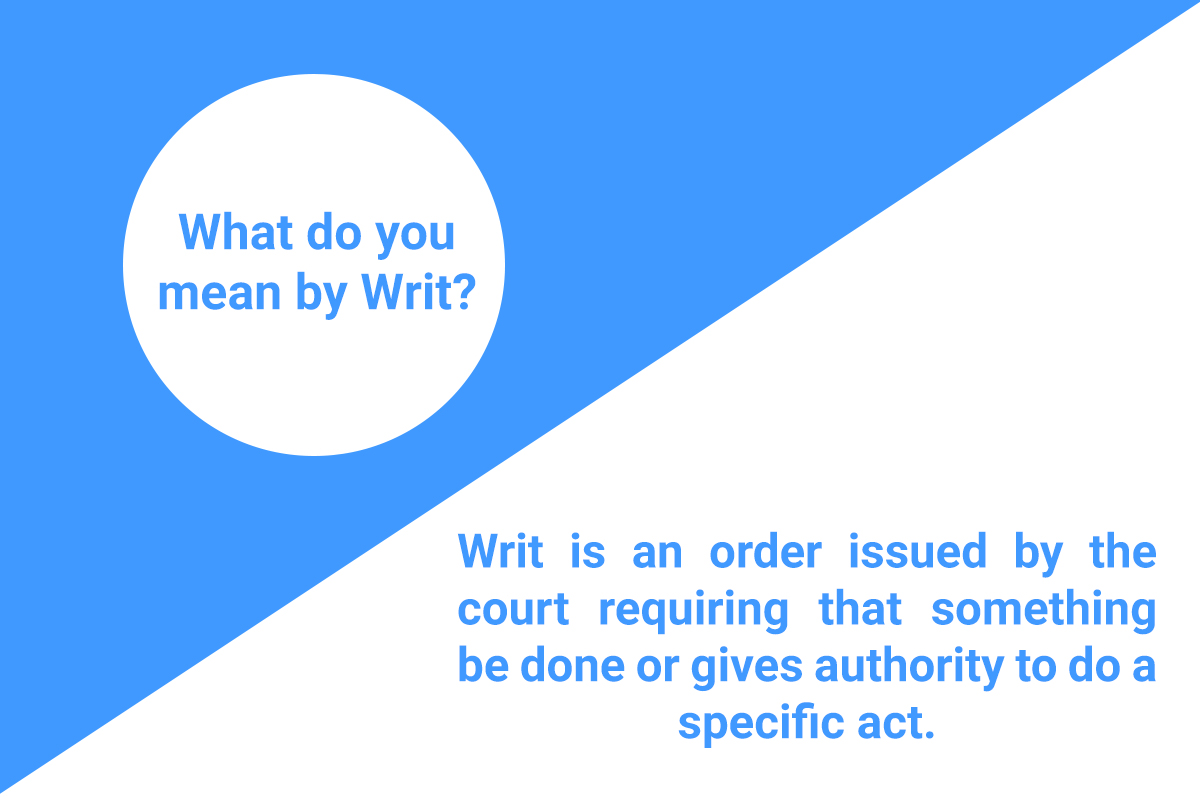The writ is an order issued by the court requiring that something is done or gives authority to do a specific act. The Supreme Court and the High Court have the power to issue writs including the writs of habeas corpus, mandamus, prohibition, quo warranto, and certiorari or any of them for the enforcement of the rights. This power is conferred under article 32 and article 226 of the Indian Constitution respectively.
Difference between the power of the Supreme Court under Article 32 and the High Court under Article 226
The power conferred under article 226 is wider than article 32 in the following ways:
- The cause of action arises when there is an injury to fundamental rights in article 32. In article 226, the cause of action arises when there is an injury to the fundamental right and for any other purpose. Thus, the power conferred under article 226 is wider than the power to the supreme court under article 32.
- The opposite party though not specified generally states in the case of article 32 due to the injury to fundamental rights. In the case of article 226, the opposite party can be any person or authority or any government.
- During the period of emergency, the fundamental rights can be suspended except article 21 and 22. Therefore, Article 32 can also be suspended during emergency Period, but article 226 cannot be suspended.
- Article 32 is a fundamental right itself whereas 226 is not a fundamental right.
- Article 32 is specific in nature whereas article 226 is general in nature
The similarity between both the articles is that the target is the violation of fundamental rights and the relief sought is same.
Locus Standi (Who can apply):
Traditionally a person whose right has been infringed shall apply for relief under article 32/226. But this rule of locus standing was liberalized in the case of S.P Gupta v. UOI (1982) saying that any member of the public who has sufficient interest shall enforce the right of those who cannot approach the court because of their poverty or disability.
Writ Jurisdiction on Private Bodies:
Writ jurisdiction can also be applied to private bodies which are not stated under the meaning of article 12 but it is amenable to the writ jurisdiction in view of the duties and functions performed by the body are of public nature. Also, these bodies are backed by statutory legislation. Some examples are:
- Banking Sector- Reserve Bank of India
- Telecom Sector- Telecom Regulatory Authority of India
- Board of Control of Cricket in India
Types of Writs:
-
Habeas Corpus
Habeas Corpus is a Latin term that means ‘you may have the body’. The writ is used in the form of an order calling upon a person by whom another person is detained to bring that person before the court and to let the Court know by what authority he was detained that person. If the cause shown discloses that detained person has been detained illegally the court will order his release. The main objective of this writ is to give quick and immediate remedy to a person who has been unlawfully detained by the person whether in prison or private custody.
-
Mandamus
The word ‘mandamus’ means ‘the order’. The writ of mandamus is an order by a superior court commanding a person or a public authority to do or forbear to do something in the nature of public duty or in certain cases of statutory duty. The writ will apply when there is a failure to perform a mandatory duty but will not apply when duty is merely discretionary in nature. It will also not apply to a private individual or organization and obligation arising out of a contract.
-
Prohibition
A writ of prohibition is issued to prevent an inferior court or tribunal from exceeding its jurisdiction or acting contrary to the rules of natural justice. This writ is issued to compel an inferior court to keep within its jurisdiction in both cases where there is excess jurisdiction and where there is the absence of jurisdiction.
-
Certiorari
A writ of certiorari is issued by a superior court to an inferior court to remove a suit from such inferior court and adjudicate upon the validity of the proceedings. It is used to quash what has already been decided and remove the case for trial to the higher court.
Certiorari and Prohibition have much in common yet they are different as certiorari is a cure whereas prohibition is prevention. Prohibition is to prevent the proceeding from going further in a court with no jurisdiction whereas certiorari is to quash what has already been decided.
-
Quo Warranto
The word ‘quo warranto’ means ‘what is your authority’. By this writ, the holder of an office is called upon to show to the court under what authority he holds the office. The main objective is to prevent a person from holding an office which he is not legally entitled to hold. If the inquiry leads to finding that the holder has no title then the court may pass an order preventing the holder from holding office and declare the office vacant. It is to be proved that the office in question is a public office and the person is holding it without legal authority.

